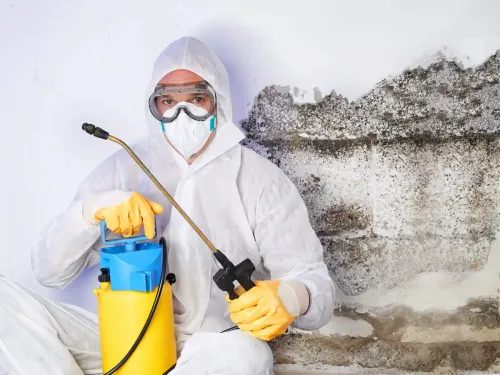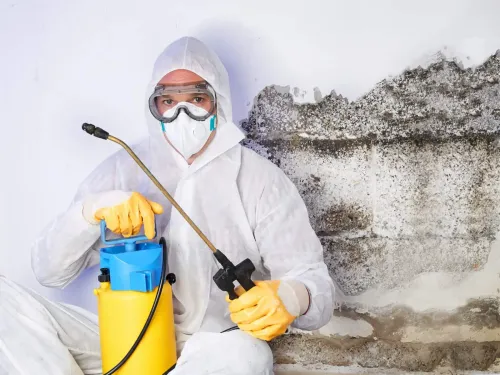Can Asbestos Be Fully Removed From a Building?

Asbestos, once celebrated for its durability and heat resistance, is now infamous for its significant health risks, including lung cancer, asbestosis, and mesothelioma. Though its use has declined sharply, asbestos is still found in many older buildings, posing a serious challenge for property owners. So, can asbestos truly be fully removed from a building? The answer isn’t simple — it depends on the extent of contamination, the methods used, and the building’s intended future use. Here, we’ll explore the complexities of asbestos removal, the methods available, and whether full removal is achievable.
The Role of Asbestos in Construction
Asbestos was a popular material in construction throughout much of the 20th century due to its fire-resistant properties, insulation capabilities, and affordability. It was used in a variety of building materials, such as:
- Insulation: Commonly used around pipes, boilers, and in attics.
- Ceiling Tiles and Popcorn Ceilings: Used for its fireproofing and soundproofing qualities.
- Flooring and Adhesives: Incorporated into vinyl tiles and mastics.
- Roofing and Siding: Added to cement products for durability.
- Fireproofing: Found in doors, walls, and structural elements.
While asbestos-containing materials (ACMs) are generally safe when undisturbed, even minor renovations or damage can release microscopic fibers into the air, creating significant health risks.
The Health Hazards of Asbestos
Asbestos exposure occurs when its fibers are inhaled or ingested, becoming lodged in the lungs or other tissues. Over time, this exposure can cause inflammation, scarring, and eventually life-threatening diseases. The Environmental Protection Agency (EPA) states there is no safe level of asbestos exposure, and the World Health Organization (WHO) reports that asbestos-related diseases account for over 107,000 deaths annually worldwide.
What makes asbestos particularly dangerous is its latency period — symptoms of asbestos-related illnesses often do not appear until 20 to 50 years after exposure, making early detection nearly impossible.
Can Asbestos Be Fully Removed?
1. Assessing the Extent of Asbestos Contamination
The first step in determining whether asbestos can be fully removed is identifying where and how much asbestos is present. This involves:
- Professional Inspections: Certified asbestos inspectors conduct thorough visual assessments and collect material samples for lab analysis.
- Mandatory Testing: Current regulations require that all properties undergoing renovations or demolitions be tested for asbestos, regardless of their age. Testing and abatement must be performed by separate licensed entities to ensure objectivity and safety.
2. Removal vs. Encapsulation
Managing asbestos typically involves one of two approaches: removal or encapsulation.
- Asbestos Removal (Abatement): This process involves physically removing ACMs from the building. While it offers a permanent solution, complete removal is labor-intensive, costly, and requires stringent safety measures to prevent fiber release during the process.
- Encapsulation: Encapsulation seals ACMs with a protective barrier to prevent fibers from becoming airborne. While less invasive and often more cost-effective, this method leaves the asbestos in place, meaning it could pose a hazard if disturbed in the future.
3. Challenges of Complete Removal
Achieving full asbestos removal from a building isn’t without its challenges:
- Complexity and Expense: Removing ACMs is a meticulous process that requires skilled labor, specialized tools, and adherence to strict regulations. Costs can range significantly depending on the size of the building and the extent of contamination.
- Risk of Fiber Release: During removal, asbestos fibers can easily become airborne, posing risks to workers and occupants. Professionals mitigate this with negative air pressure systems and HEPA filtration.
- Regulatory Requirements: Asbestos removal is governed by federal, state, and local laws, requiring permits, detailed work plans, and proper disposal at certified facilities.
- Disruption: The removal process can disrupt building operations, often necessitating temporary relocations or business closures.
Because of these challenges, many professionals favor controlled abatement — a method that strategically reduces asbestos exposure risks without attempting full removal. This approach balances safety, cost, and practicality.
How Is Full Removal Achieved?
While challenging, full asbestos removal is possible with proper planning and execution. Professional abatement companies follow these steps:
- Planning and Permits: Develop a detailed abatement plan that outlines the scope of work, safety measures, and timeline. Obtaining permits from relevant authorities.
- Containment: To prevent the spread of fibers, containment zones are set up using plastic sheeting and negative air pressure systems. Workers must wear full personal protective equipment (PPE) to minimize exposure.
- Safe Removal: Professionals use specialized tools to remove ACMs without breaking them into smaller, fiber-releasing pieces. Materials are often wet down to reduce dust and securely bagged for disposal.
- Disposal: ACMs are double-bagged in leak-proof containers and transported to certified hazardous waste facilities for disposal in compliance with EPA guidelines.
- Air Monitoring and Clearance Testing: Post-removal air testing ensures that fiber levels are safe. Clearance testing, conducted by a third-party inspector, confirms that the building is free of hazardous asbestos contamination.
Is Full Removal Always Necessary?
Complete asbestos removal may not always be the best solution. In some cases, encapsulation or limited abatement may be sufficient, particularly if the ACMs are intact and located in areas unlikely to be disturbed. Factors to consider include:
- Building Use: Homes and commercial properties with frequent renovations may benefit from full removal.
- Budget: Full removal is more expensive than encapsulation, which may be a viable option for budget-conscious property owners.
- Long-Term Plans: If you plan to sell or demolish the building, full removal may be required to comply with safety regulations.
Should You Pursue Full Removal?
While it is possible to fully remove asbestos from a building, the process requires meticulous planning, significant resources, and the expertise of licensed professionals. For many property owners, a combination of removal, encapsulation, and ongoing management may offer a safer and more cost-effective approach.
If you suspect asbestos in your building, don’t take chances. Asbestos Professionals LLC provides certified abatement services tailored to your needs. Whether you’re considering full removal or controlled abatement, our expert team ensures compliance with all regulations, protecting your health and property. Contact us today to schedule an inspection or consultation and take the first step toward a safer environment.













